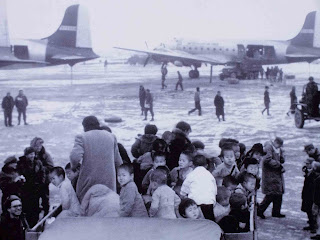The de facto boundary between South and North Korea bisects the Korean Peninsular along the 38th parallel. Originally established at the end of WWII as a brief division between the United States and Soviet administration areas, it became a de facto political boarder when the Korean War ended in 1953.
The Korean War commenced on June 25, 1950 with a surprise full-front invasion into the south by Communist military forces from the north. This bitter war claimed more than three million lives, devastated much of South Korea and ended in 1953 after international intervention pushed the front back to the 38th parallel. A demilitarized zone (DMZ) was created as each side agreed to move their troops back 2,000 m from the front line, creating a buffer zone 4 km wide. Sixty years later Korea is still a divided nation separated by the most heavily militarized boarder in the world.
Korean War Images
Tours to the DMZ operate out of Seoul and such an opportunity was a compelling "do' for the Bazflyers. From a strategic vantage point our view across the desolate fog draped DMZ landscape was chilling enough and the ever present armed soldiers cemented a strong feeling of being at the font-line. Every young South Korean male is required to complete 21 months of military service and many of them serve duty at observation posts along the 250 kilometer DMZ.
South Korea views the north as a significant threat. This sentiment is especially heightened at present while North Korea continues its quest to test launch an intercontinental range missile and develop a nuclear weapon's program.
However, despite such aggravation, South Korean's live in hope for eventual reunification. A modern symbol of this hope must be the Dorasan Railway Station. Located at the boarder crossing and built with South Korean donations, this complex sits silently waiting for the resumption of train services between North and South Korea.
Dorasan Railway Station




No comments:
Post a Comment